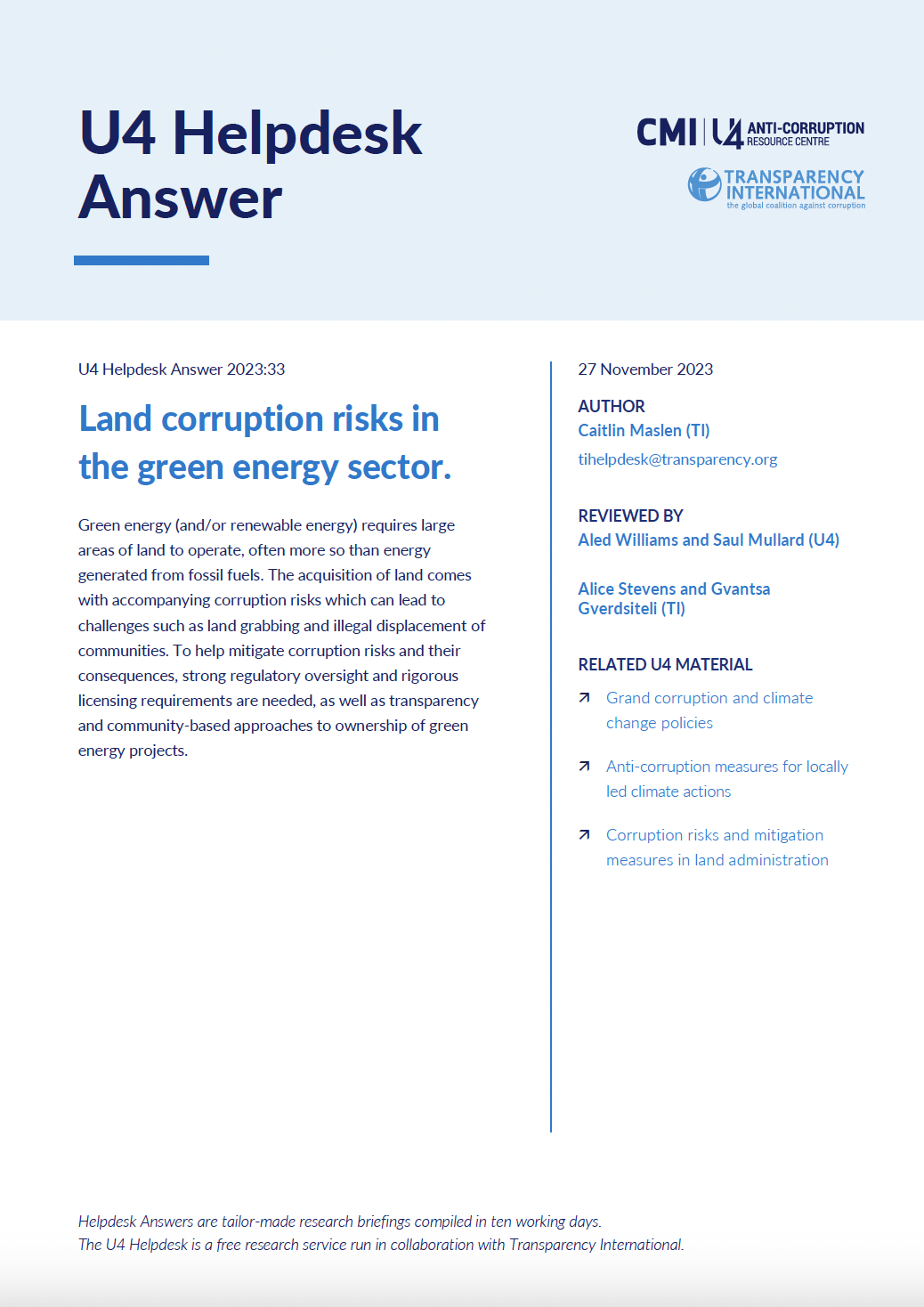Land corruption risks in the green energy sector
Resource information
Date of publication
oktober 2023
Resource Language
Pages
21
License of the resource
Green energy (and/or renewable energy) requires large areas of land to operate, often more so than energy generated from fossil fuels. The acquisition of land comes with accompanying corruption risks which can lead to challenges such as land grabbing and illegal displacement of communities. To help mitigate corruption risks and their consequences, strong regulatory oversight and rigorous licensing requirements are needed, as well as transparency and community-based approaches to ownership of green energy projects.
Main points
- The green energy transition requires land for the extraction of critical minerals and for the development of farms and plants, such as wind farms and geothermal plants.
- This demand for land increases corruption risks such as bribery, embezzlement and a lack of compliance with legal frameworks and policies by project developers. These may lead to consequences such as land grabbing and the displacement of affected communities without fair compensation.
- These land corruption risks are aggravated by what is termed the “green resource curse”, where a body of literature considers green energy to be a new driver of the resource curse, which in turn may reduce overall state accountability.
- Interventions to reduce the likelihood of land corruption risks should not only focus directly on the corrupt acts but also focus on creating a more accountable and participatory sector where affected communities (particularly Indigenous peoples) have a voice and are considered equal among officials and experts in terms of decisions made about land use.

